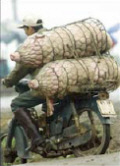



Media Battles: Changing the View of Livestock Production
This article is taken from the proceedings of the Livestock Care Conference, held by Alberta Farm Animal Care. Media is highly influenced by animal activist groups, says veteran analyst Dan Murphy, and reframing the issues can help turn the tide for producers.One of the best ways to understand how the media treats coverage of farm animal welfare, says a communications strategist with extensive experience in media, is to consider the following example.
“Suppose you went in for day surgery and there were complications. Would you consider the experience a deviation from the norm – possibly incompetence on the part of your surgeon – or would you say, ‘The whole medical industry is flawed – I’m never going to a doctor ever again?’”
As ridiculous as that last, extreme conclusion might sound says Dan Murphy, a partner in Outsource Marketing in Bellevue, Washington, that’s exactly how the media presents the livestock industry when dealing with stories on animal welfare. At the same time, he says, developments being made in on-farm animal welfare are being largely ignored by mainstream media.
This is no accident. Murphy says a media that is already fundamentally uneducated on the farm animal production process has taken the lead of animal rights activists who launch strategic, well-funded attacks against the livestock industry.
What’s needed in response, he says, is for the livestock industry to compete with the activist groups on their own public relations turf. To do this, they need to reframe the issues to reflect progress being made in on-farm animal care. “Many key issues, including animal welfare, biotechnology, the environment and food safety, require a response that is creative, proactive and vigilant. The message we need to get out is that modern production is moving towards systems that protect animals from disease, predators and temperature extremes while allowing natural behaviors.”
Where media goes wrong
To a certain extent, the livestock industry has played a role in the disconnect between media and knowledge of farm practices, says Murphy. “Historically, the industry has had a laser-like focus on performance, often at the expense of animal welfare issues. This bottom-line bias wasn’t bad, just unbalanced. And in the process, it gave the industry’s critics an opening.”
Having said that, media – and particularly mainstream and “new” media outlets such as blogs – has played an even bigger role. “Reporters and writers are not ignorant, but they are often uninformed. Members of the media are much like the rest of the population today; frequently, they have little in the way of agricultural background and little interest in learning more.
“The biggest problem, however, is that they often fail to see the big picture. This tends to drive an unbalanced picture where sound science and extremist rhetoric is treated as if both were worthy of identical treatment. As a result, a piece on what is happening on one individual farm is presented as typical of the entire industry.”
This approach has given activist groups such as People for the Ethical Treatment of Animals (PETA) an opening to present the livestock industry as an incompetent environment where inspection is inadequate and every issue is a crisis. “Every issue is framed as ‘evil, greedy producers’ versus ‘noble, crusading reformers.’ It resonates with the public in the same way you watch a movie to see the good guy win and the bad guy lose.”
Reframing the issues
Part of the reason activists are able to do this, says Murphy, is because they frame “nature” up as the ideal, with any deviation to nature as something to be feared and condemned. “So if I’m the guy arguing against Mother Nature, am I going to win that argument? No. But livestock producers have plenty of strong nature-based arguments in their arsenal. It’s a matter of reframing the issues. Here are some examples.”
Animal welfare

Reframed: “The fact is that no animal dies a nice, Disney-style death in the wild. Modern production systems offer animals the best of both worlds: the opportunity to live approximately how they would in the wild while being protected from disease, predators and extremes in temperature. In that sense, they live a life similar to that of most household pets.”
Food safety
What the activists say: Outbreaks and illnesses from pathogen-bearing bacteria are preventable, if only the agricultural industry cared enough to make the effort.
Reframed: “We don’t want to get rid of bacteria – bacteria is important to all life. Although microbial pathogens are ubiquitous, resilient and ever-evolving, modern food production reduces the risk to the point where almost 100 percent of U.S. meal occasions are problem-free.”
Biotechnology
What the activists say: Natural is normal, science is scary and leads to the production of “Frankenfoods.”
Reframed: “We need biotech to feed the world, ramp up energy production, preserve wildlife habitat and maintain food security.”
Production inputs
What the activists say: “Big Pharma” is made up of greedy profiteers raking in the cash at the expense of human and animal health. “Natural” meats are superior to those in which antibiotics, hormones and other pharmaceuticals have been used in the production process.
Reframed: “Due to inputs, beef producers have doubled productivity since the 1950s, producing better quality beef on less acreage with fewer animals, in the process saving arable farmland, reducing prices and increasing the availability of nutritious protein to feed the world.”
Environmental damage

What the activists say: Production agriculture depletes resources, concentrated feeding compound manure handling and waste disposal issues, and methane from cattle causes global warming. In short, meat equals global warming and resource depletion.
Reframed: “There is a tremendous relationship between animal husbandry and other segments of food production, with producers and farmers carrying the potential to be the ultimate environmental stewards.”
Vegetarianism
What the activists say: The new traditional diet is meat-free – we’ve evolved beyond meat.
Reframed: “Without modern science, technology, pharmacology, processing systems and distribution infrastructure, the vegetarian lifestyle would be impossible. Also, on a global basis, most livestock production occurs on land not suitable for vegetable and grain production.”
How to get involved
Ultimately, it’s up to livestock producers to send these messages to the media, says Murphy. “Producers are the vanguard. You have the credibility to speak up and speak out for your industry. Activists are not going to abandon their causes and the media are not going to educate themselves. Industry participants can, and must, help sustain their businesses and markets by helping to reframe the debate, reposition the issues and speak the truth to an uninformed media.”
This effort does not necessarily require comprehensive action on the part of individual producers, he says. “In many cases, it can be as simple as writing a letter to the editor or taking opportunities to speak to friends, family, colleagues and strangers about the issues.”
Becoming involved in organizations on the leading edge of farm animal health can also play a role. Alberta Farm Animal Care (AFAC), for example, is a partnership of Alberta’s major livestock groups with a mandate to promote responsible, humane animal care within the livestock industry.
Further Reading
| - | You can view other features from the 2008 Livestock Care Conference by clicking here. |
April 2008



